Fujifilm Fujinon XF 10-24 mm f/4R OIS
3. Build quality and image stabilization
Let’s check whether you gain anything if you use the Fujinon instead of some reflex camera constructions - the appropriate comparison presents the following chart. As you see here the Fujinon is physically the smallest, with the lowest filter diameter. Still the differences are really slight. Apart from that the Fujinon’s weight remains significant and, to tell you the truth, it is clear that the tested lens is more similar to big reflex camera instruments than to small devices for mirrorless cameras. If you decide to purchase it, don’t count on a lighter backpack or much cheaper filters.
In the photo below the Fujinon 10–24 is positioned between the Fujnon 18–55 mm and the Olympus M.Zuiko 9–18 mm; it allows you to put its significant dimensions in the right perspective.
Please Support UsIf you enjoy our reviews and articles, and you want us to continue our work please, support our website by donating through PayPal. The funds are going to be used for paying our editorial team, renting servers, and equipping our testing studio; only that way we will be able to continue providing you interesting content for free. |
- - - - - - - - - - - - - - - - - - - - - - - - - - - - - - - - - - - - - - - - - - - - - - - -
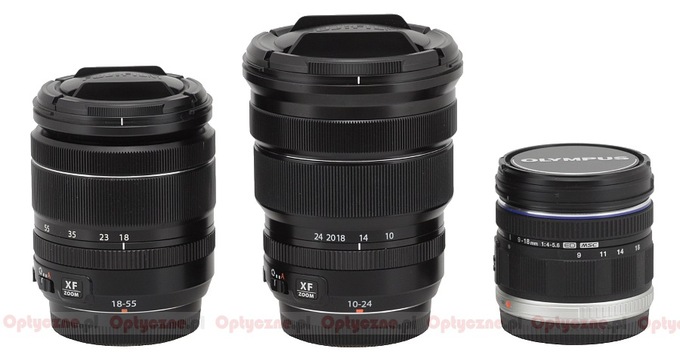 |
The tested lens starts with a metal mount surrounding a contact plate and an immobile, rectangular rear element, as big as 24×17 mm. Its usage means the lens is completely sealed from the side of the mount.
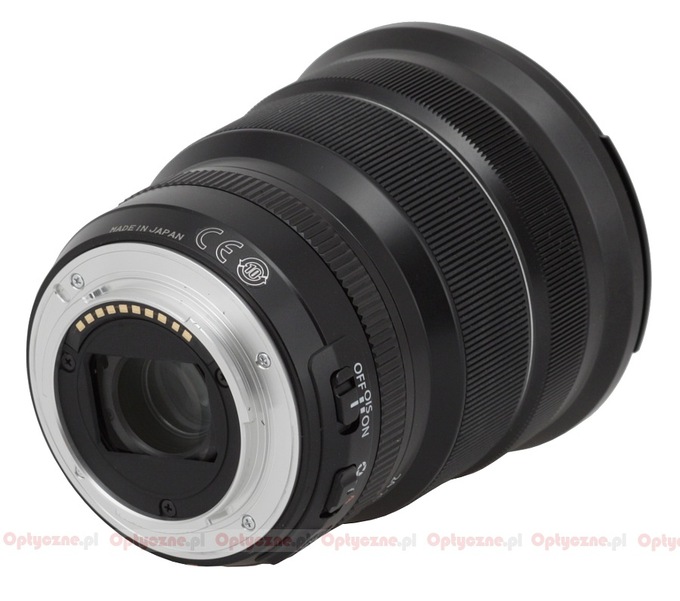 |
The proper casing of the lens starts with a red square, which makes the alignment with a camera easier, and an inscription “10-24”. On the left, a bit further on, you see a plate with an inscription “XF ZOOM” and, behind it, an aperture mode switch (automatic, manual) and an optical stabilization switch (OIS ON/OFF).
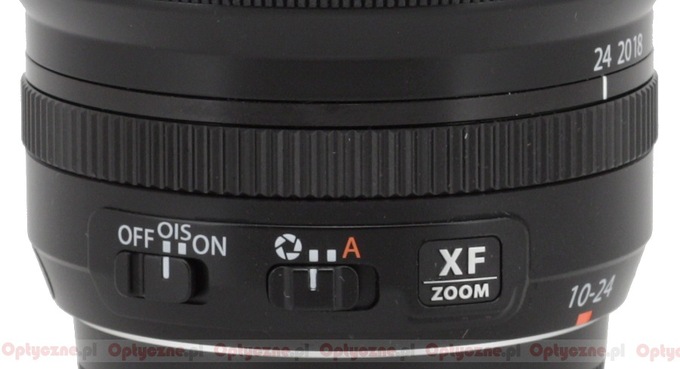 |
The next part is a ribbed manual aperture ring, 7 mm wide. It works pretty well, allowing you to set an aperture value every 1/3 EV step. Right behind it you see a narrow part of the casing which turns into a zoom ring. The ring is 29 mm wide and most of it is occupied by ribbing under which you can find focal length markings by 10,14, 18, 20 and 24 mm. The ring is property damped, allowing you very precise settings; as there are no slacks, the focal length value doesn’t change uncontrollably.
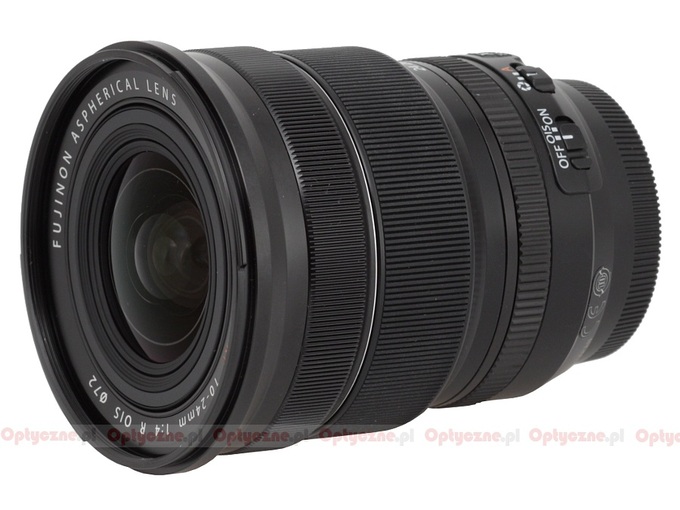 |
Then you see another ring – this time responsible for manual focusing. It is 14 mm wide, ribbed, and works with electronic transmission. Running through the whole scale takes a turn through about 160 degrees, so the ring is a joy to use.
The manual focus ring ends the main part of the lens’s body. Further on there is just a hood mount, surrounding a non-rotating filter thread 72 mm in diameter, and an inscription with the name and the parameters of the lens. The front element is a bit convex, with a diameter of 4 cm. It changes its position with the change of the focal length: it is remains the most exposed at 10 mm then, at 16 mm, it hides a bit inside the casing (not deeper than 0.5 cm), and then it is pulled forward again.
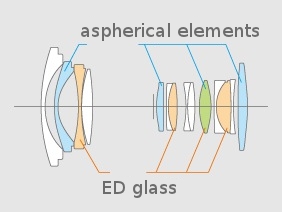 |
The inner construction of the lens is truly impressive. You deal here with as many as 14 elements positioned in 10 groups. The producer claims they used four aspherical elements and three made of low dispersion glass; still the picture above seems to suggest that one element is both aspherical and made of ED glass, proving that the official specifications are a bit inconsistent. Inside you can also find an aperture with seven blades which can be closed down to f/22.
Buyers get both caps, a petal-type hood and a soft pouch in the box.
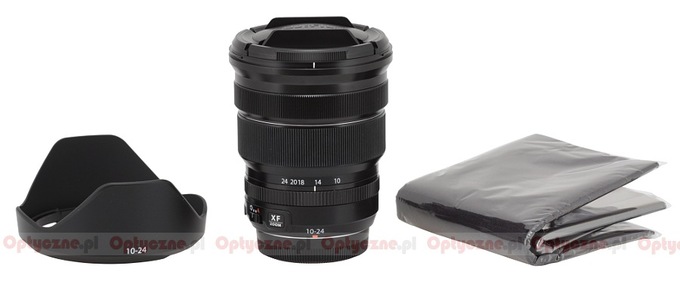 |
Optical stabilization
The tested lens is equipped with an optical stabilization mechanism (OIS) which declared efficiency amounts to 3 EV. We decided to check that claim. In order to do so we took several dozen photos at 24 mm focal length for every exposure time ranging from 1/50 to 1/1.6 of a second with the stabilization switched on and off. Then we determined a percentage of blurred photos and presented it as an exposure time function graph, expressed in EV (where 0 EV is an equivalent of 1/30 of a second).
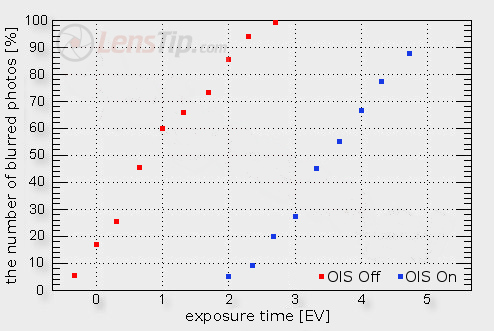
The graph shows pretty clearly why the producer, unlike its rivals, doesn’t boast of 4 EV stabilization efficiency, honestly limiting it to 3 EV. The maximum distance between both curves reaches about 2.7 EV and such is, in our opinion, the real efficiency of the stabilization mechanism. By today’s standards it is just a medium result.






